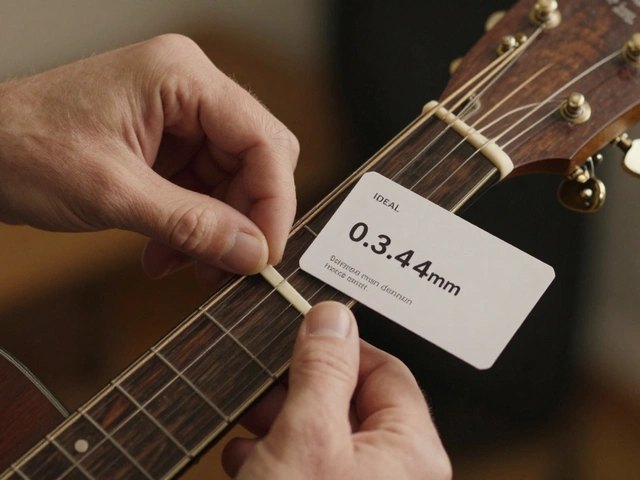How to Choose Your First Acoustic Guitar
Understanding Your Musical Needs
Now, before we get caught up in the avalanche of guitar models and technical specifications, let's park there for a second and take a breather. As my dear Aussie Shepherd, Max, always reminds me – when you're feeling overwhelmed, just take it one step at a time! In our case, the first step in finding the right acoustic guitar for you is understanding your musical needs.
The kind of music you are interested in will greatly influence the guitar you choose. No, I'm not just pulling your leg. Let me give you a quick rundown: heavier strings are suited for heavy strumming (think folk music or rock), while lighter ones lend themselves well to fingerpicking – yes, the kind of strings can really make or break your musical dreams! Well, sort of, but you get what I mean. Get to know your preferred music style first, before all else.
Size Matters: Choosing the Right Guitar Body Style
Here comes part deux, guitar body styles – no, this isn't an acoustic guitar modelling contest, but indeed a significant part of your guitar buying decision. You have the classic dreadnought, the grand concert, the auditorium(AKA the Swiss Army knife of guitars – not really, but I like the idea of a multi-purpose guitar), the jumbo and many more. The style determines not only the sound but also the playability of the instrument. Smaller bodies like the grand concert are perfect for petite players and fingerstyle enthusiasts. Larger bodies like the dreadnought and jumbo pack a louder punch and are fantastic for strummers.
In this department, don't rush in making a decision solely based on what model your favourite rockstar uses. Focus more on what feels comfortable for you. While my parakeet, Skye, is perfectly content building her nest on the jumbo guitar lying around my living room, you may find playing on it an entirely different experience!
Navigating the Wood Types and What They Mean for Your Sound
Onto the world of woods – and no, we are not doing a woodworking class. Each type of wood on a guitar comes with its unique set of tonal properties. For instance, spruce tops are popular for their versatility and wide dynamic range, while cedar, being softer, is great for fingerpicking. The type of wood used in your guitar's back and sides will also contribute to its overall tonality.
Just remember, the beauty of a guitar is not only in its gloss and polish but also in its unique resonance and tonal quality. Much like Max, my Australian Shephard's distinct personality shines through his glossy coat, the character of a guitar is in its tone, which is significantly influenced by the type of wood. Embrace the nerd within you and don't shy away from understanding these nuances. It's totally worth it!
Staying within Your Budget and Ensuring Value
Now, onto one of the most significant parts of the journey, staying within your budget. As exciting as it might be to lash out on a shiny new guitar that catches your eye, we need to be realistic. Don't go on an impulsive buying spree, or you might end up eating instant noodles for months. I remember when I got my first guitar, my excitement got the best of me, and I almost overspent my savings. Thankfully, my sense of culinary self-preservation kicked in, and I chose a decent, but affordable option.
A lot of affordable guitars are very well made these days, and spending a fortune on your first acoustic is hardly necessary. Investment in quality is essential, but remember that an expensive guitar doesn't necessarily make you a better player. Money can't buy you love, as they say, and it certainly can't buy you talent!
Try Before You Buy: Testing Out Your Potential Guitar
Finding your dream guitar isn't just about combing through guitar catalogs, reading reviews, and comparing prices online. It is about trying the guitar out yourself. Hold it in your hands, listen to how it sounds and see if it meshes well with your style. And even if you're a newbie, don't be shy. Everyone starts somewhere.
I still fondly remember shopping for my first guitar. I had minimal knowledge, but the moment I strummed that old second-hand Martin in the shop, it felt right. There was a connection; it was like we understood each other. So, regardless of how little you think you know or how unimpressive you believe your strumming sounds, give it a go. The salespeople in music shops have seen and heard it all. So, don't be shy!
Remember, buying your first guitar isn't just about getting a musical instrument. It's about getting a musical companion to guide you on this exciting musical journey. You're not just picking a guitar, you're choosing a friend. Ask Max, my Australian Shepherd. He can vouch for the power of good companionship!






